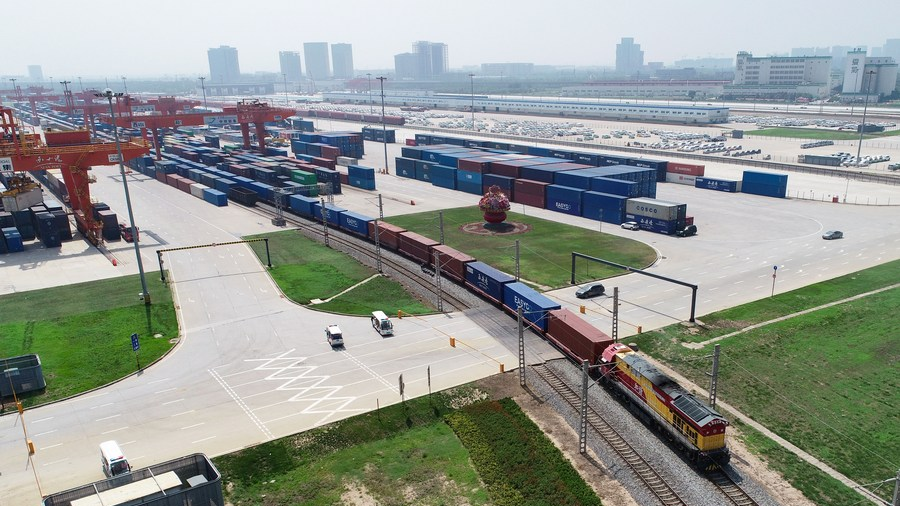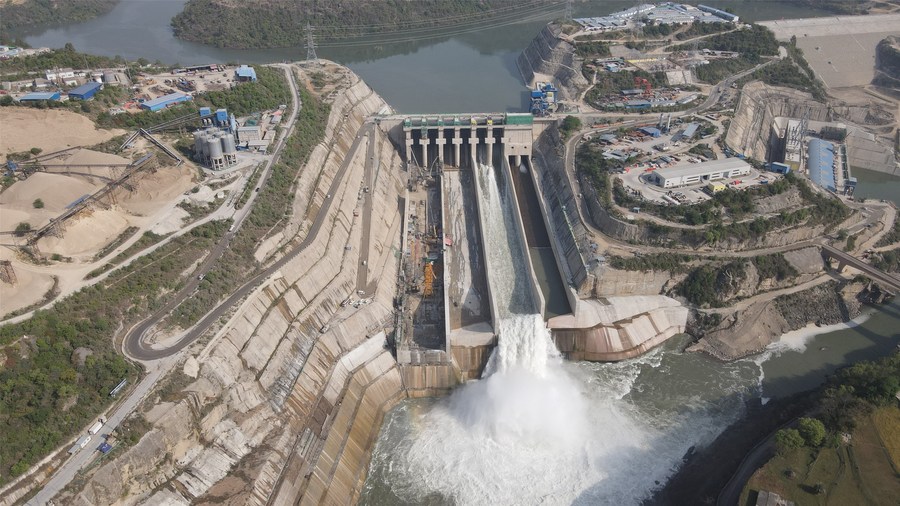
Train No. X9015, a China-Europe freight train, leaving for Kazakhstan from Xi'an International Port in Xi'an, northwest China's Shaanxi Province, July 29, 2022. /Xinhua
Train No. X9015, a China-Europe freight train, leaving for Kazakhstan from Xi'an International Port in Xi'an, northwest China's Shaanxi Province, July 29, 2022. /Xinhua
The China-proposed Belt and Road Initiative (BRI) allows countries in the Global South to connect with each other, a Pakistani economist said recently.
"We have seen that China itself has come out of years and decades of poverty, and it has transitioned into a country that is fast developing. So for them to tailor a program for the developing countries is much easier than for the Global North," Vaqar Ahmed, joint executive director at the Sustainable Development Policy Institute, an Islamabad-based think tank, told Xinhua in a recent interview.
This is what China has been trying to do under the BRI, he added.
The BRI is a very decent model for cooperation, particularly for developing countries, because many programs are led or participated in by developing countries and by some of the poorest countries in the world, Ahmed said.
"So it's not like traditional development programs, for example, a model having bilateral, multilateral donors involved that will come in and do a diagnostic of their own, and then they will offer you a platter or a choice set, that this is what we can do for you, would you sign up for it," he said.
But it's not the way that the BRI, or its flagship project, the China-Pakistan Economic Corridor (CPEC), has operated, he said.
Launched in 2013, the CPEC is a corridor linking the Gwadar port in southwestern Pakistan with Kashgar in northwest China's Xinjiang Uygur Autonomous Region, which highlights energy, transport and industrial cooperation.
"In BRI or, like in the case of CPEC, you were asked to come up with a priority of choices. What do you want? Where do you want Chinese investment to go? You prioritize that," the economist added.

Aerial photo of the Karot Hydropower Project, the first hydropower investment project under the CPEC in Punjab province, eastern Pakistan, April 9, 2022. /Xinhua
Aerial photo of the Karot Hydropower Project, the first hydropower investment project under the CPEC in Punjab province, eastern Pakistan, April 9, 2022. /Xinhua
Most of the BRI's technical assistance projects, in the case of infrastructure, are backed by a financial model, which is easier for developing countries to participate in as most of them are in investment mode, Ahmed said.
Even if they are loan projects, he noted that they are loans for longer time periods with repayments not around the corner, which is really helping the developing countries to come on board and has allowed more and more of these countries to become part of the BRI umbrella.
Highlighting the upcoming third Belt and Road Forum for International Cooperation in Beijing in October, the economist said that one of its objectives is that the countries of the Global South, who are beneficiaries of the BRI, should actually come together to share those experiences and knowledge.
It's not just the responsibility of China; in fact, all those countries participating in the BRI should utilize this opportunity to share their experiences, he said.
"So without naming any multilateral institution from the Global North, if they were delivering you a project in, let's say, five years or 10 years, BRI was able to cut short that time," said Ahmed, adding that a BRI project would perhaps have been delivered in one or two years, and "there are countless examples within Pakistan."
Elaborating on the importance of understanding the global trade architecture, the economist noted that the way the BRI stands at the moment would potentially create more opportunities and productive capacities for developing countries in the future.
"Once those productive capacities are created, for example, in my large-scale manufacturing sector, I would like to trade more. But this is the time when Global North should not change the rules of the trade," said the economist.
"If you don't like multilateralism now, that's going to send a very negative signal to the Global South, to the developing countries, who have added productive capacities due to BRI, due to CPEC," he pointed out.
(With input from Xinhua)